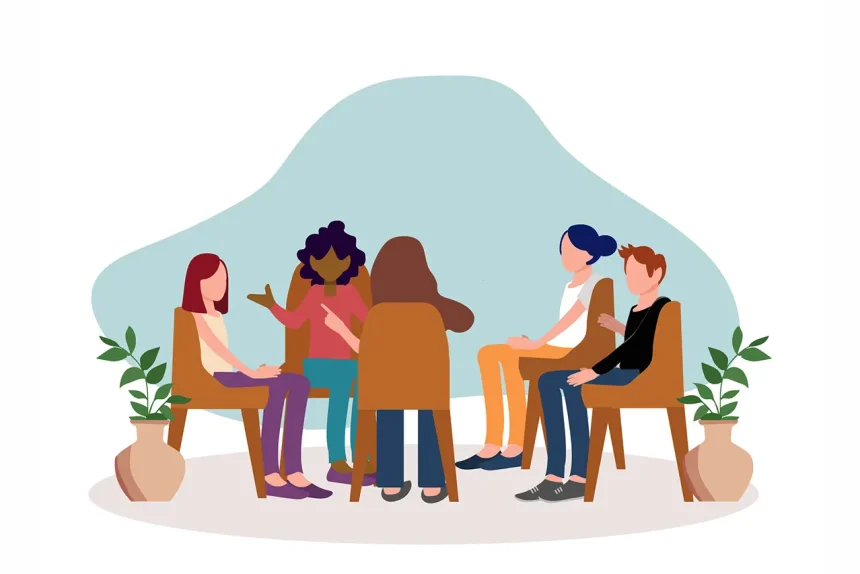Understanding group dynamics and leadership styles plays a crucial role in occupational therapy. By employing structured techniques, therapists can enhance participation and achieve therapeutic goals effectively. One such method is Cole’s 7 Steps, which ensures organized and engaging group sessions. This guide will explore these dynamics and provide practical insights for aspiring occupational therapists.
What are Group Dynamics?
Group dynamics involve the processes and interactions within a group setting. In occupational therapy, they create opportunities for building communication, teamwork, and interpersonal skills. Effective facilitation fosters a supportive environment, motivating members to engage fully.
Cole’s 7 Steps of Group Facilitation
Cole’s 7 Steps is a structured framework instrumental in leading therapeutic groups. This strategy guarantees that group objectives are met while maintaining a positive environment. Let’s break down each step:
1. Introduction
The session kicks off with introductions, setting expectations, and creating a welcoming atmosphere. This step is crucial for encouraging active participation.
Example: A therapist greets each participant by name and shares the goals for the session.
2. Activity
Activities are selected to align with therapeutic goals and participant abilities, ensuring they are both meaningful and engaging.
Example: Collaboratively working on an art project to boost communication skills.
3. Sharing
Participants share their experiences or thoughts, fostering trust and participation within the group.
4. Processing
This step involves discussing feelings related to the activity and is crucial for understanding group dynamics.
Example: Therapists ask open-ended questions like, “What was your most valuable takeaway from today’s session?”
5. Generalizing
The group reflects, identifying common themes or lessons learned, enhancing cognitive learning.
Tip: It’s crucial for understanding what members have gained from the session.
6. Application
Participants discuss applying newfound insights to real-life situations, ensuring practical relevance.
Example: Using time management strategies at home.
7. Summary
Therapists recap key points and encourage a sense of accomplishment as the session concludes.
Leadership Styles in Occupational Therapy Groups
Occupational therapists leverage various leadership styles to cater to group needs and goals. Below are the primary styles:
- Directive Leadership (Autocratic)
- Therapists take full control and provide clear, structured guidance.
- Ideal for low-functioning groups needing step-by-step instructions.
Example: Patients with cognitive impairments engaging in structured tasks.
- Facilitative Leadership (Democratic)
- Therapists promote group decision-making and shared responsibility.
- Best for groups with moderate abilities.
Example: Support groups allowing members to choose discussion topics.
- Advisory Leadership (Laissez-Faire)
- Minimal therapist direction, focusing on guidance as needed.
- Suitable for high-functioning groups capable of self-direction.
Example: Caregiver support groups setting autonomous goals.
Why Group Leadership Matters
Effective leadership in occupational therapy groups enhances cohesion, communication, and progression. Adapting the leadership style to meet group needs ensures a positive therapeutic experience.
Take the Next Step in Mastering Group Facilitation
Understanding frameworks like Cole’s 7 Steps and choosing the right leadership style is vital for successful occupational therapy group work. Enhance your expertise and explore our comprehensive modules and resources for deeper understanding.
Want detailed practice tips to ace the NBCOT® exam? Join now for full access!
What is Cole’s 7 Steps method in occupational therapy?
Cole’s 7 Steps is a structured framework used in occupational therapy to facilitate effective group sessions. It includes Introduction, Activity, Sharing, Processing, Generalizing, Application, and Summary to ensure therapeutic goals are met in an organized and engaging manner.
How do group dynamics enhance occupational therapy?
Group dynamics in occupational therapy involve interactions that build communication, teamwork, and interpersonal skills. Effective facilitation within a group setting fosters a supportive environment, motivating full engagement from participants.
What leadership styles are used in occupational therapy groups?
Occupational therapy groups use Directive (Autocratic), Facilitative (Democratic), and Advisory (Laissez-Faire) leadership styles. Each style is chosen based on the group’s functional level and needs to effectively achieve therapeutic goals.
How can I apply the insights from occupational therapy sessions to real-life situations?
Participants are encouraged to discuss how they can apply insights and skills learned during occupational therapy sessions to real-life situations during the ‘Application’ step of Cole’s 7 Steps, ensuring the therapy has practical relevance.
Why is effective leadership important in occupational therapy groups?
Effective leadership in occupational therapy groups enhances group cohesion, communication, and therapy progression. Adapting the leadership style to the group’s needs ensures a positive and productive therapeutic experience.



